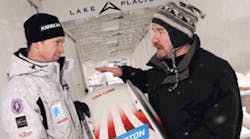Engineering design need not be all work and no play, especially when it comes to winter sports. Case in point: Two engineers from Clarkson University, Potsdam, N.Y., are working to design a faster and more aerodynamic sled for the United States Luge Team, which it hopes to use at the 2014 Winter Olympics in Sochi, Russia. Mechanical engineering professors Douglas Bohl and Brian Helenbrook will use computer models and wind tunnels to speed up the sled and reduce drag.
Bohl got involved after his 13-year-old son tried out for the USA Luge development team last year. While traveling to the luge track in Lake Placid with his son each weekend, Bohl met Olympic medalist Mark Grimmette and proposed an idea for a research project to reduce aerodynamic drag on the sled.
“We've wanted to do this for years, but didn't have the resources,” says Gordy Sheer, director of marketing and sponsorship for USA Luge.
Luge is the only Winter Olympics gravity sport measured to 1/1000th of a second, so tiny changes in drag can greatly affect times.
“We'll build a computer model of a sled with a slider on it, compute the drag, examine the flow going past and finally put an actual sled in Clarkson's wind tunnel to make drag measurements,” says Bohl.
Eventually, a sled will be built based on the team's research and taken to the low speed (sub-sonic) wind tunnel at the San Diego Air and Space Technology Center where USA Luge sleds are tested.

